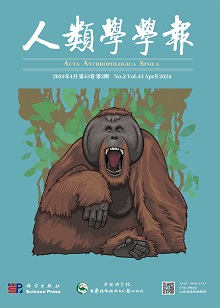Dental calculus is essentially a mineralized or fully mineralized dental plaque, which provides a new avenue for archaeological research due to its characteristics of easy preservation, accessibility and non-pollution. The highly mineralized nature enables itself to be well preserved for a long time, and also provides a good storage medium for various residues trapped in dental calculus. Consequently, extraction and analysis of residues from dental calculus becomes feasible. Since the analysis of dental calculus was used in archaeological research in the 1960s, residue analysis on ancient dental calculus has been carried out for more than 60 years. Along with more analysis methods applied to dental calculus, many important progresses have been made. In summary, the residue analysis on ancient dental calculus focus on the dental calculus attached on the surfaces of human or animal teeth unearthed from archaeological sites. Using multidisciplinary analysis methods such as including plant microfossil, stable isotope, palaeomicrobiology, ancient DNA and so on, various types of residues entrapped in dental calculus are extracted, and the properties, sources, and types of these residues are identified and analyzed, revealing the dietary sources of ancient humans and animals, which can reflect the economic activitieand social conditions.
As of December 2022, at least 147 research papers on the residue analysis of ancient dental calculus have been published both domestically and internationally (excluding 12 master's and doctoral theses), including 121 from abroad and 26 from domestically, which indicate that the residue analysis on ancient dental calculus has gradually become an effective way to explore the economic and social conditions. This paper systematically combs the research progress of residue analysis on ancient dental calculus from four aspects: Elaborated dietary construction of human, development and spread of early agriculture, East-West resource exchange and consumption, and utilization of specific resources, and reveals its important value in archaeological research, and looks forward to the application of residue analysis on ancient dental calculus in archaeological research in China. More analytical methods such as organic residues should be applied in ancient dental calculus analysis in China, which can maximize the extraction of residues from ancient dental calculus and help to expanding research fields to animal husbandry by-products, consumption and utilization of specific resources, etc. As a common and easily accessible biological remains, ancient dental calculus might become a routine object in bioarchaeological research, and residue analysis of ancient dental calculus is expected to become a new academic growth point in the field of bioarchaeology in China.











